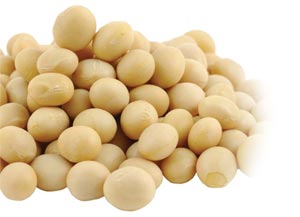July 2016
Farmers are becoming more aware of the importance to implement crop rotation into their management practices. Crop rotation is the practice where farmers rotate the crop planted in a certain land from year to year; this is the opposite of monocropping where a farmer will plant the same crop every year.
So, for example, a farmer may plant two crops for two years in a row such as maize and then in the third year they will rotate by planting a second crop such as soybeans. There are many different advantages for the farmer in doing this which I will outline in this article.
Firstly, different crops require different nutrients from the soil. If we constantly plant the same crop every year we will continually be depleting the same nutrients. If on the other hand, we rotate the crop that we plant, the different plants will take advantage of varying nutrients which will give others a chance to rejuvenate. This is also why it is advantageous to plant a legume crop in the rotation which will not only take advantage of different nutrients than maize, but it will also fix nitrogen back into the soil for the following year’s crop to make use of. Nitrogen is required especially by maize to produce a high yielding crop.
There are however a few rules that we should follow when planting our soybeans or other chosen legumes. Firstly, we must make sure that we choose a reliable proven cultivar to plant. We should study trials from areas where the conditions and climatic variations are similar to those of the lands where you intend to plant the beans. By studying the trials you will be able to choose a cultivar that will perform well and benefit your business; for this season and the season to follow when the next crop will be taking advantage of the residual nutrients.
The second rule is to make sure that you plant the crop correctly. Different crops require different technology to plant and harvest. Be sure that you have the correct planting plates and combine header to place the seed into the ground during planting season and remove the crop from the field during harvest time.
The third and perhaps the most important rule is to inoculate the seed before planting. The reason that one should inoculate the seed prior to planting is in order to achieve nitrogen fixing from the plant into the soil. For this nitrogen fixing to occur there needs to be bacteria called bradyrhizobia present in the soil which is achieved through the process of inoculation. This bacterium is housed in the nodules on the soybeans roots which you will notice if you pull a plant out of the ground and analyse the roots, the soya plant will only make use of a small percentage of this nitrogen where the rest is fixed into the soil for future crops to make use of.
 If the bradyrhizobia bacterium is not present then the nodulation will be limited. Rhizobia inoculants can be applied in either a liquid or a granular form onto the seed prior to planting and can be purchased from any agricultural chemical company or co-operative outlet. It will be beneficial for the farmer to seek advice from a chemical representative for the correct handling and application recommendations of the inoculants.
If the bradyrhizobia bacterium is not present then the nodulation will be limited. Rhizobia inoculants can be applied in either a liquid or a granular form onto the seed prior to planting and can be purchased from any agricultural chemical company or co-operative outlet. It will be beneficial for the farmer to seek advice from a chemical representative for the correct handling and application recommendations of the inoculants.
It is crucial for a farmer to understand the soil as well as the plant which they grow in that soil. Every plant has different re quirements and the soil responds and interacts differently with each plant also. Our goal should be to achieve a balance of give and take where we are not only taking from the soil, but where we are also giving back to the soil.
Article submitted by Gavin Mathews, Bachelor in Environmental Management
For more information, send an email to gavmat@gmail.com.
Publication: July 2016
Section: Pula/Imvula